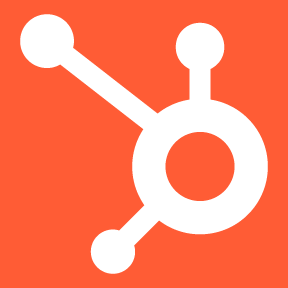The thrill of netting a new customer is one of the most addictive sensations in the world of business. We invest heavily in lead generation and conversion strategies, pouring over metrics until finally – that beautiful moment of success! Your website converts a visitor, a demo clinches the deal, or someone opens their wallet… Cha-ching!
Yet, too many businesses make the colossal mistake of seeing the initial purchase as the ultimate finish line. This is a shortsighted view. In the SaaS world, and arguably many other spaces, customer acquisition is merely the prelude to a much longer, richer symphony - that of customer retention and growth.
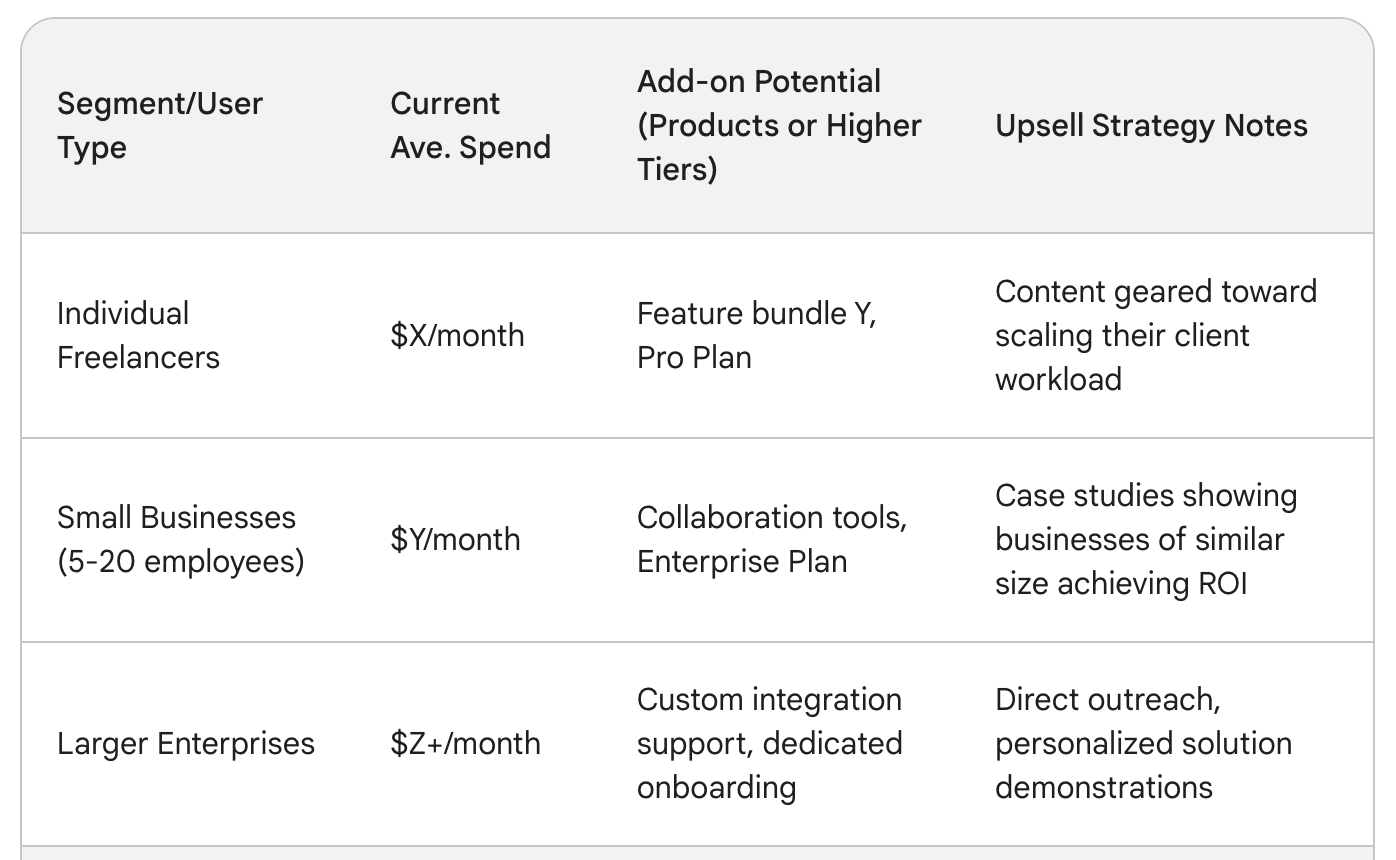
This post tackles the art and science of nurturing customers well beyond that first point of sale. It's designed for marketers like myself, those who know the basics of engagement and want to truly understand its nuanced depths. I'll share tips, techniques, and insights gleaned from years of experience running a marketing agency. Let's explore how to turn casual purchasers into devoted brand advocates.

Why Focus on Post-Sale Engagement?
Reduced churn- The leaking bucket syndrome plagues the business world. It's much easier to retain happy customers than spend sleepless nights acquiring new ones just to replace those who drift away. Engaged customers stick.
Lifetime value (LTV) growth- Engaged customers buy more, upgrade frequently, and stay with you for longer stretches. Nurturing this engagement means your average customer generates far more revenue for you over time.
Increased referrals- When your customers are excited, they become your walking, talking billboards. Word-of-mouth from a satisfied customer base supercharges your marketing efforts.

The Psychology of Post-Purchase Engagement
Before we dive into tactical actions, a grounding in customer psychology is key. What does your customer actually experience after making that initial purchase?
The anticipation high: After buying, anticipation is high. It's like unwrapping a gift at the holidays. This excitement builds expectations for a successful onboarding and seamless value delivery.
The learning curve reality-check: New products inevitably have a learning curve. Early challenges might lead to doubts and hesitation on your customer's part ("Did I make the right decision?").
The honeymoon phase of "new": Once your customer gains fluency with your product and enjoys initial success, there's a honeymoon phase of fresh delight. This is a critical moment to cement loyalty.
Your engagement strategies should align with this psychological rhythm. Let's look at ways to make this a reality.
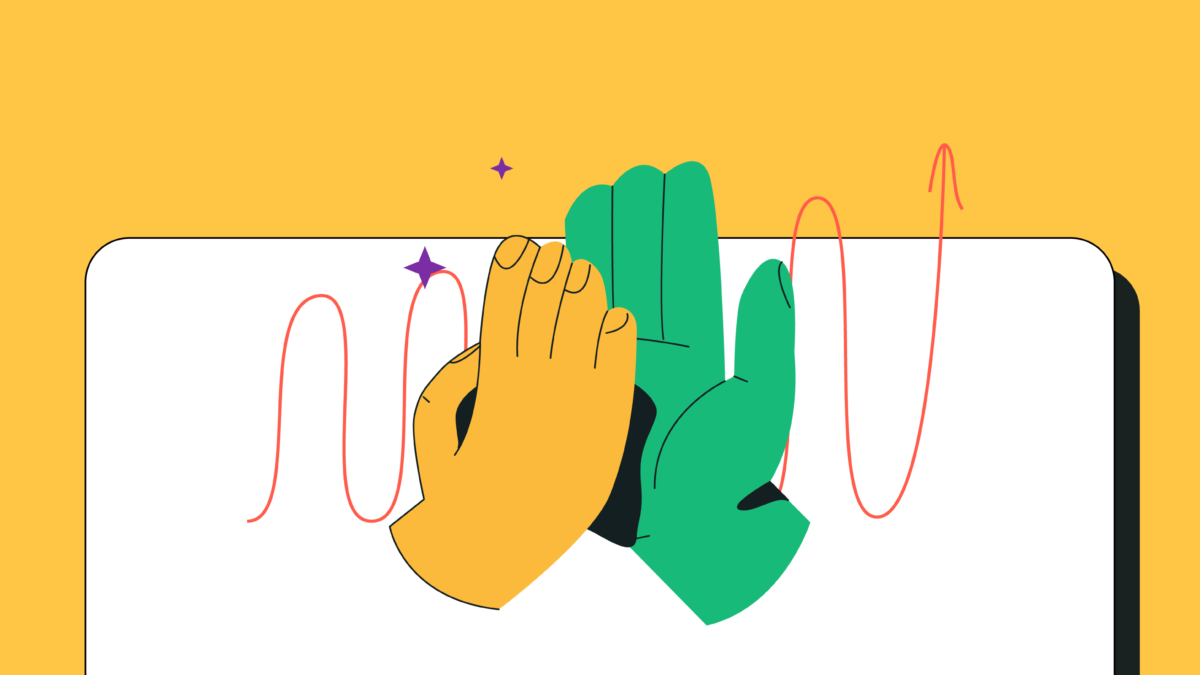
Operational Pillars of Engagement
Building customer engagement shouldn't be haphazard. Here are core pillars on which to lean:
Seamless Onboarding
Ensure those first moments using your product are utterly intuitive. If customers stumble right out of the gate, frustration builds quickly. Invest time and resources into:
- Crystal-clear knowledge base articles.
- Automated onboarding sequences (emails guiding them step-by-step).
- Option for low-friction live support (for tech-averse users)
- Proactive outreach: Instead of waiting for your customer to contact you, anticipate pain points and reach out to offer personalized guidance.
Proactive Support
Don't treat support reactively. Proactive customer success can take several forms:
- Regular customer check-ins: Schedule calls or personalized emails inquiring about their experience, asking for feedback, and addressing potential problems before they become serious complaints.
- Success metric monitoring: For SaaS products, analyze in-app behavior. If you see an account with usage drops, red flags pop up. This is an opportunity to reach out and help your customer get back on track.
Value-add Communication
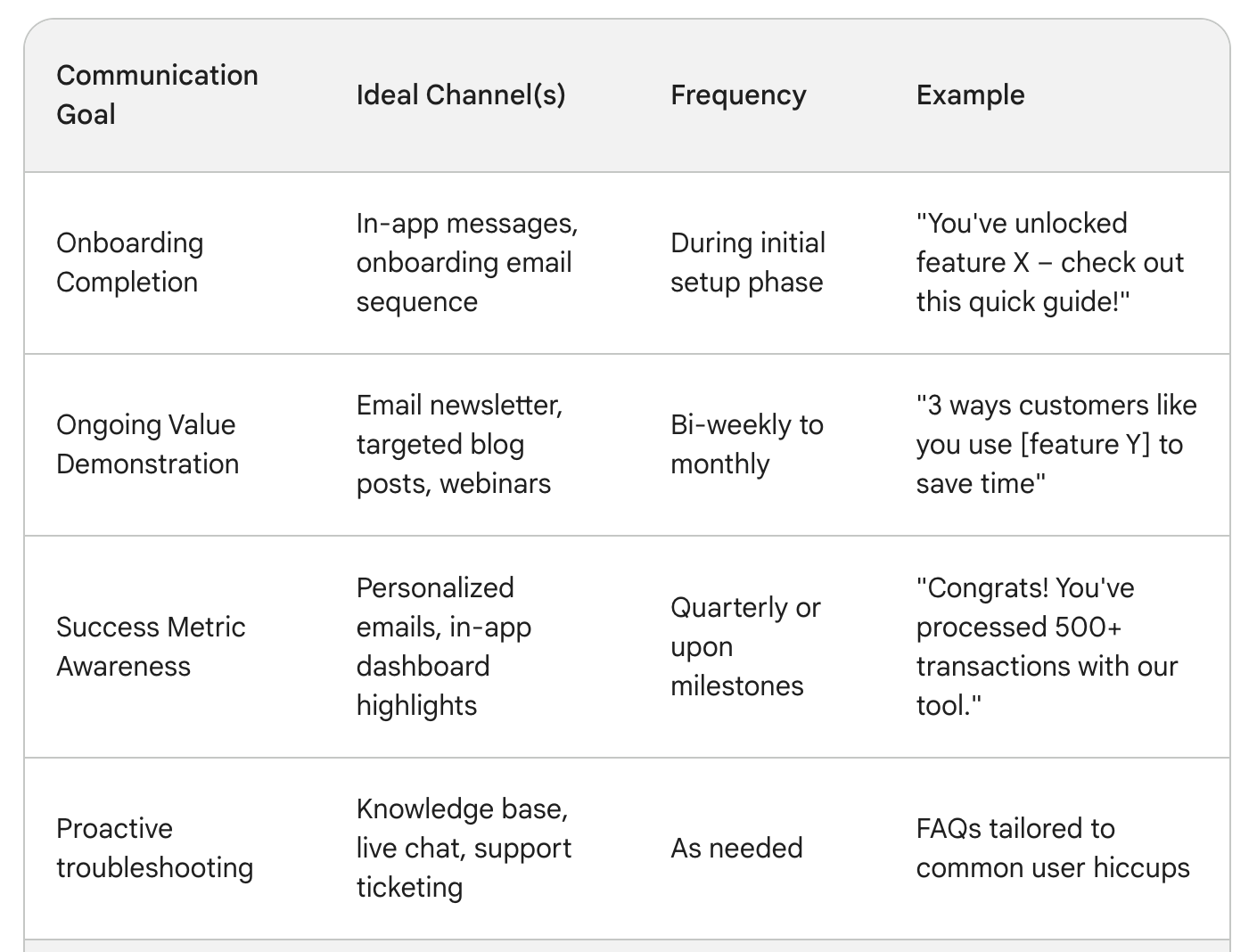
Let's move from pure operational touchpoints to a richer value-driven relationship. Think:
- Personalized content: Curate a knowledge base, send newsletters, or create social media posts directly addressing common pain points. When customers feel their problems are understood, loyalty soars.
- Success stories: Highlight how other customers achieved remarkable results with your product. Social proof builds trust and creates a sense of what's possible.
- Sneak peeks: A behind-the-scenes look at new features or product roadmaps makes customers feel like partners. It builds anticipation and reduces the temptation to explore competitors.
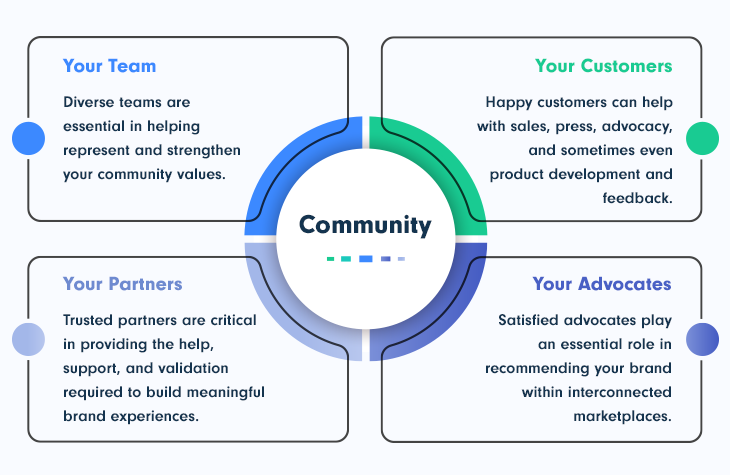
The Power of Community
Community building isn't just for B2C companies. Businesses of all stripes benefit from an active user community. Here's why:
Peer-to-peer support: When customers assist each other, it lessens the support burden on you. Plus, users tend to feel a deeper connection to a brand when part of something larger than themselves.
Collective wisdom: Customer communities become incredible sources of innovation, with feature requests and improvement suggestions rising naturally.
Here are ways to encourage this community mindset:
| Mechanism | How it Works | Example |
|---|---|---|
| Online forums | A dedicated space for discussion and troubleshooting. | Discourse, vBulletin |
| Slack/Discord groups | Facilitates real-time conversations + friendly banter. | A marketing automation tool's Slack. |
| Customer webinars | Host talks with experienced users as panelists. | A series on advanced feature usage. |
The Art of Surprise and Delight
We've delved into the nuts and bolts of engagement. Here's where things get extra exciting – going above and beyond with the element of surprise. This doesn't require expensive swag or outlandish schemes. Small, well-timed gestures work wonders.
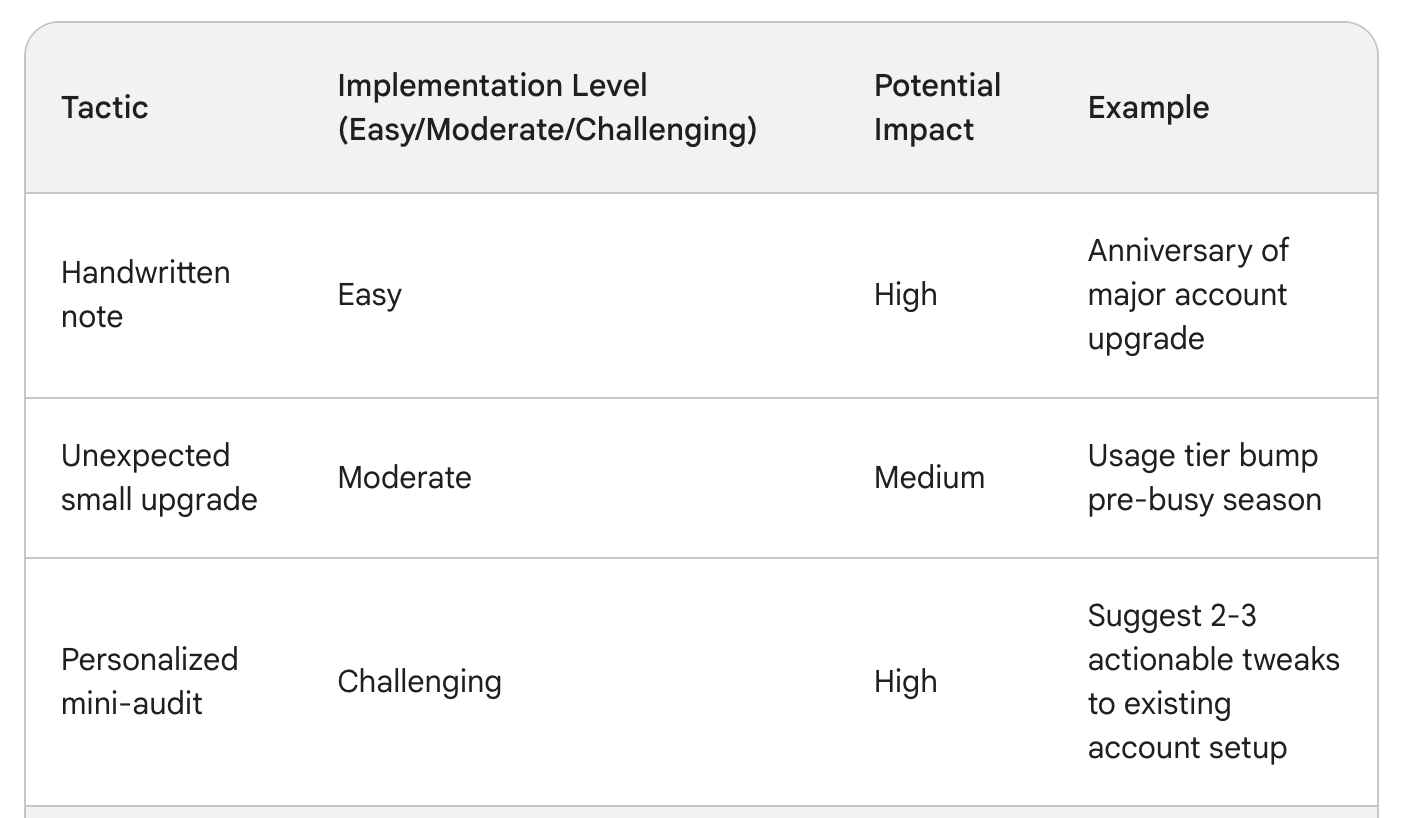
The handwritten thank you note In our age of automation, a personal note sent after a significant purchase feels special. This is extra meaningful if a high-level executive at your company takes the time to send it.
Unexpected upgrades If a customer's approaching their usage limits, offer an unexpected temporary bump in storage, seats, or bandwidth – with a friendly notification that you were happy to help them during a heavy-usage period.
Celebrating user anniversaries Send a little 'anniversary' message a year after a customer's purchase date. Mention it alongside valuable usage metrics that show the benefits they've accrued since joining.

The Power of the "Aha!" Moment
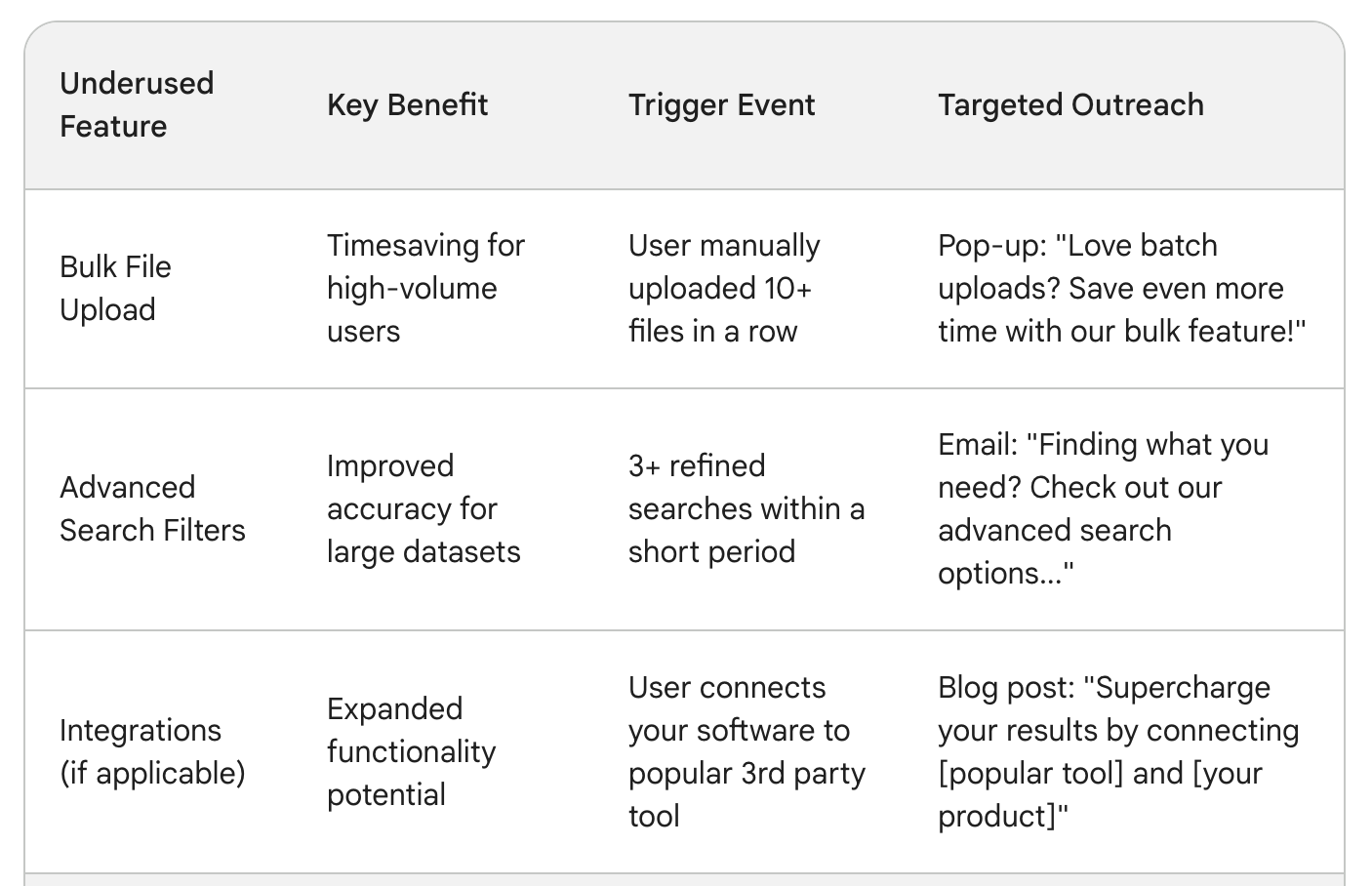
SaaS products (which my marketing agency knows all about) thrive when those transformative "Aha!" moments are frequent. This signifies your customer fully grasps the power of what's at their fingertips, making them significantly less likely to abandon you. How to engineer these moments?
Gamification: Introduce badges, progress bars, or micro-rewards when users unlock a new feature set or master a skill in your software. This taps into our deep-seated love of challenge and progress tracking.
Feature spotlights: Periodically highlight an underutilized feature your data suggests could greatly benefit a segment of your user base. A short targeted email series showing what's possible can drive renewed excitement.
Personalized "mini-audits" For some products, offering free mini-audits of a customer's setup with actionable insights on optimization unlocks tremendous value. Many will implement those actions independently, while some may become perfect leads for an upsell to your done-for-you implementation services.
Nurturing customers beyond the first sale is the secret ingredient to healthy recurring revenue and sustainable growth in the competitive world of software and services. It's a journey, not a destination – the best brands constantly revisit how to enhance support, offer value, and surprise their customers.
Investing in these principles fosters customer loyalty at a depth far beyond transactions. Engaged customers become evangelists, champions who propel your growth further than traditional marketing ever could.
FAQ
Q1: My focus has always been on the initial sale. Why is this post-sale engagement so critical?
It's a natural inclination, but think of it this way: acquiring a new customer is similar to planting a seed. If you don't water and nurture it, expecting a bountiful harvest isn't realistic. Customer engagement tackles churn at its root by turning satisfied users into enthusiastic promoters of your brand—which significantly reduces reliance on a constant stream of new sales. Plus, happy customers spend more over time, making your initial investment pay off much better.
Q2: My team is small. Honestly, is focusing on engagement feasible for us?
Absolutely! Even small teams can implement effective engagement strategies without draining all resources. The key is being focused. Start with 1-2 high-impact tactics: perhaps proactive check-ins with new users for the first month, or a monthly value-packed customer newsletter. Small actions with consistency reap far greater rewards than trying to overhaul everything at once and getting nothing done properly.
Q3: Does "post-sale engagement" only apply to long-term clients, or even those I just signed yesterday?
The principles apply to customers at every stage! Yes, the strategies shift depending on someone's familiarity with your product, but that immediate post-purchase "honeymoon" is critical. This is where the initial excitement sets expectations–it's your job to surpass them through stellar onboarding and demonstrating quick wins your product makes possible.
Q4: Help! My churn rate is still higher than I'd like. Where do I begin to analyze engagement issues?
Start by delving into your data. Are customers quickly downgrading plans? Dropping off entirely within a specific timeframe? Look for patterns. In-app usage metrics are gold mines – see which features go unused, or pinpoint where people exit the app mid-task. This reveals friction points, hinting at onboarding deficiencies, confusing UI, or a need for targeted educational content.
Q5: I hate feeling "salesy". How do I provide value-adds past the sale in a genuine way?
The mindset shift is key: don't view this as selling more, but rather showing you truly care about your customers' goals. A newsletter is the perfect example. Don't just stuff it with product news. Curate helpful tips tangentially related to what you offer, addressing broader audience pain points. This builds trust; they come to see you as a resource, not just a vendor.
Q6: Community sounds enticing, but I worry about maintaining it and creating enough buzz...
Don't start big! Consider smaller niche forum threads within an existing platform relevant to your industry, or a lively Slack channel focusing on one aspect of your tool. It's also crucial to seed those early discussions with great questions–things your users truly want to opine on and learn from each other about. Early participation can set the tone for the community’s future health.
Q7: Any "surprise & delight" tactics on a low budget?
Absolutely! The handwritten thank you note goes a LONG way. Consider personalizing emails after big milestones achieved via your software. Also, monitor usage spikes – was a customer extra busy last month? A small add-on credit is thoughtful ("We saw you crushed it - this month's extra storage/bandwidth boost is on us!"). Generosity feels delightful when unexpected.
Q8: How do I know if my current onboarding is weak?
Test it yourself! Go through the steps as if you were a brand-new user with minimal tech knowledge. Ask less tech-savvy friends/family to attempt it and note where they stumble. Support tickets are vital too – do the same questions keep cropping up from new users? Those are indicators your onboarding needs bolstering.
Q9: Are there “Aha!” moments I can create on an ongoing basis, not just during setup?
Always! Regular product updates are good opportunities. Don't just send a list of changes: provide mini tutorials spotlighting a useful new feature, focusing on how it solves immediate issues for your users. If updates are small, bundle a few as "power-up moments" once a quarter. That ongoing evolution of value will make them look forward to seeing what's next.



